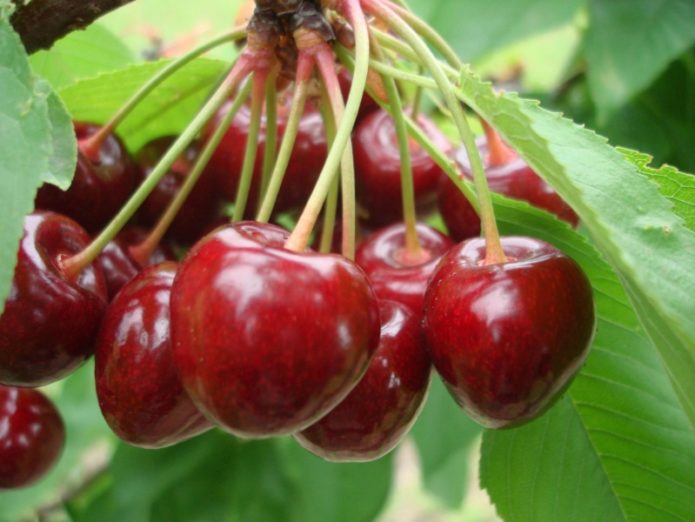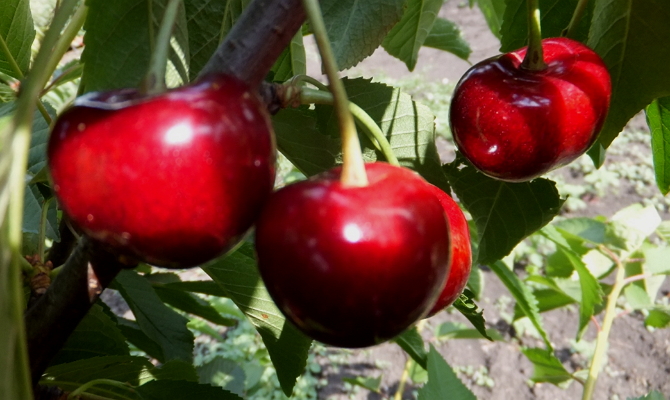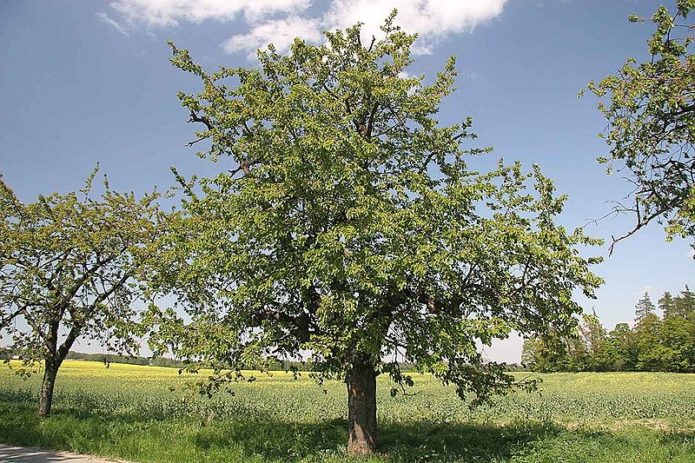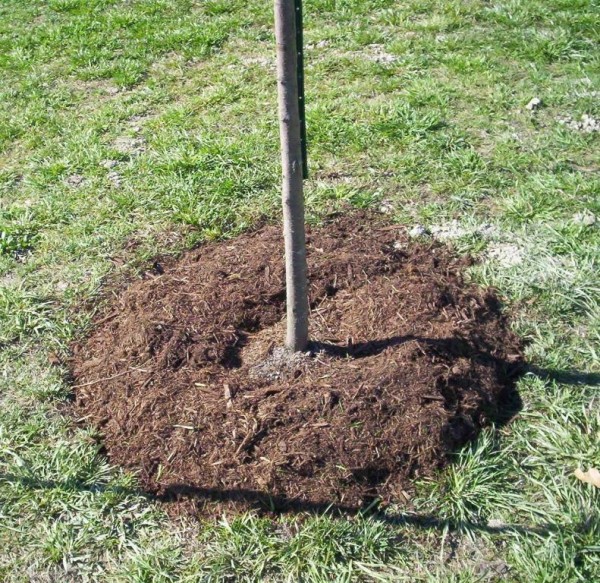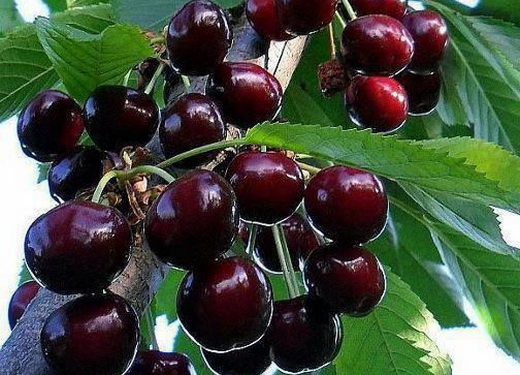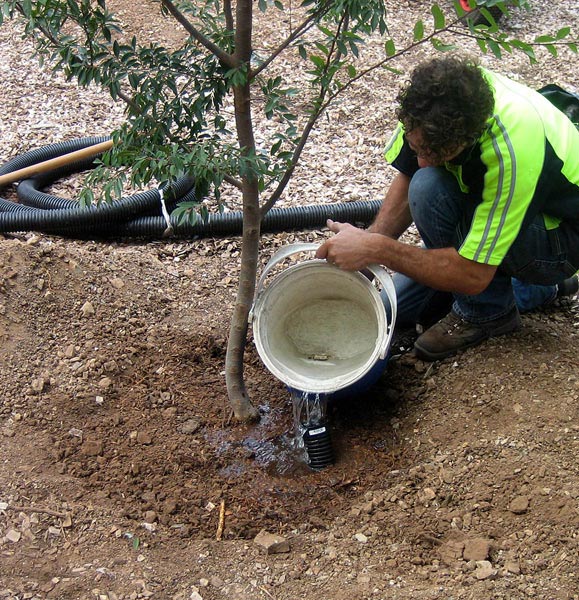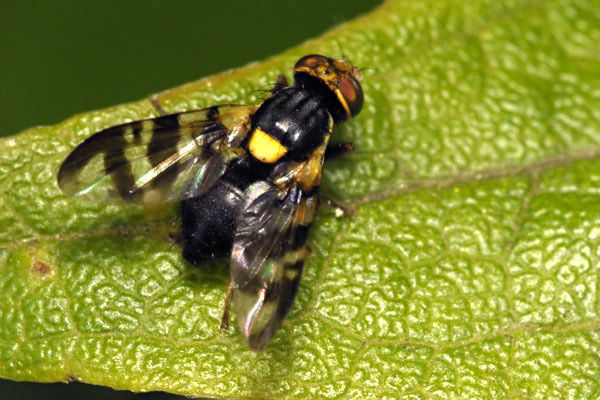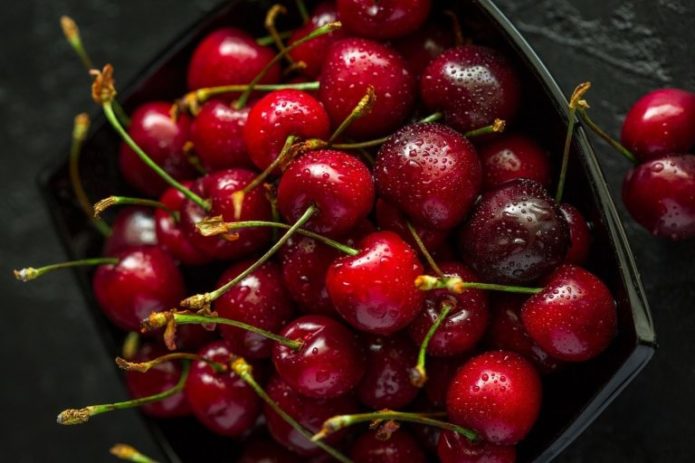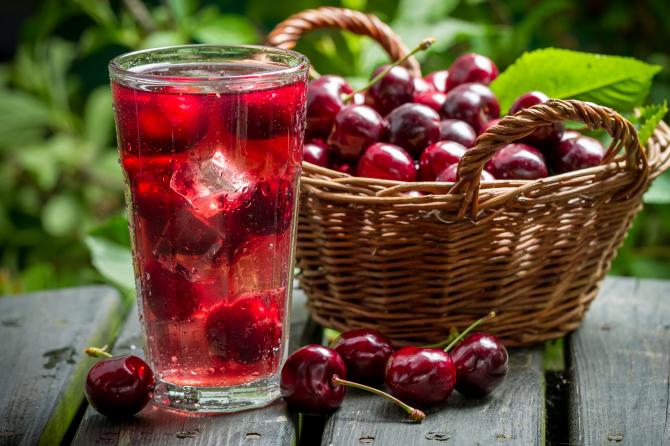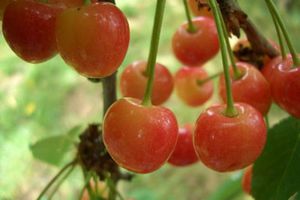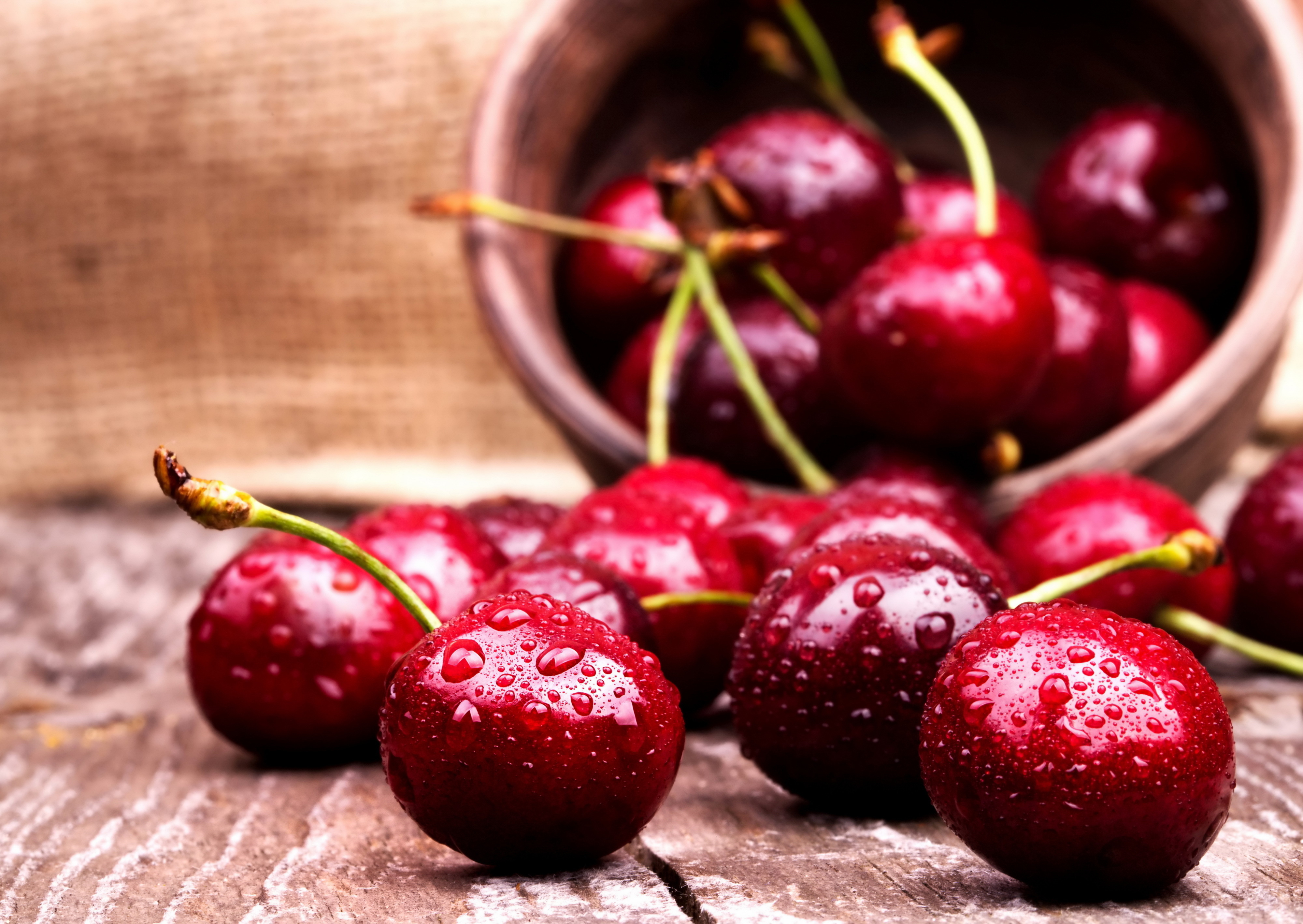Sweet cherry is one of the most delicious and delicate berries. The Vasilisa variety is very popular with gardeners. It was bred in Ukraine and has a number of advantages: it tolerates drought and frost well, has large fruits with a sweet taste, and successfully resists coccomycosis. To get a rich harvest of sweet tender berries, it is worth understanding all the intricacies of growing this crop.
Content
History of origin
The homeland of the Vasilisa variety is Ukraine. In the Artemovskaya Experimental Gardening Station, by means of selection activities, Honored Agronomist of Ukraine L.I. Taranenko received a new variety, the parents of which were the Donetsk coal and the Donetsk beauty.
Vasilisa is one of the largest cherry varieties.
Description of the variety
The tree grows to a height of about 4 m, experienced gardeners recommend regulating the growth process. The plant branches well and has a spherical crown. Thick shoots of a brown shade are slightly bent into an arc. Saturated dark green leaves with a glossy sheen - egg-shaped.
Cherry varieties Vasilisa bear large fruits that weigh from 11 to 14 g. They have a beautiful rounded shape, painted in a rich scarlet shade with a shiny surface. The dense juicy pulp crunches a little in the mouth. Small bones are easily detached. The fruit tastes sweet, you can feel a wine flavor and delicate aroma. Tasting score - 4-4.5 points out of 5.
A young tree bears fruit already in the 2nd year of life. The harvest appears on the growths of the last year and bouquet branches. Vasilisa fruits ripen in June, the variety is mid-season. If the summer is cool, the ripening process is extended and falls on the beginning of July. Depending on the soil, climate, conditions of care, the yield of an adult tree ranges from 25 to 50 kg of berries.
Advantages and disadvantages
Pros:
- Vasilisa is loved for a high-quality and large harvest;
- large, dense berries with a pleasant taste are great for eating fresh or processed;
- gardeners value this variety for its relative frost resistance and survivability during dry periods;
- unpretentiousness to conditions and resistance to characteristic diseases makes sweet cherries popular among summer residents;
- Vasilisa is great for commercial use. It tolerates transportation well, retains its presentation for a long time, which allows it to sell it profitably.
Minuses:
- if it rains heavily, the berries begin to crack. In the conditions of your own farm, the crop can be saved by quickly processing it;
- canned berries have earned a higher tasting rating than fresh fruits.
Growing features
Some varieties of cherries are grown only in a certain part of the country, which is due to the exacting conditions.Gardeners appreciate versatile varieties that adapt perfectly to almost any conditions and bring rich yields. However, some believe that it is not worth planting a culture north of Volgograd, since flower buds do not tolerate frost well.
Choosing a place and time of landing
Sweet cherries are planted in open ground in autumn, so that the root system can adapt to a new place before frost. Plants of this variety prefer loamy soil with a high level of moisture. Rubble soils are arid and not suitable for the cultivation of cherries, therefore, garden plots with such land are not chosen for Vasilisa.
The place for growing cherries should be well lit by the sun, since the plant is light-loving. Each tree needs a large area for comfortable growth and development. If the groundwater flows close to the surface, it is first necessary to build a drainage system and make an embankment. Do not place the tree in the path of strong drafts.
Planting process
- Pits are dug at a distance of 4 m from other trees so that they do not shade the cherry tree.
- Nutrient compost or humus is added to the hole and a peg is driven in to support the seedling to which the tree is tied.
- After planting, the cherries are watered abundantly and mulched using dried straw or leaves. Mulch helps to retain moisture underground and inhibits weed growth.
Pollinators
The variety is self-fertile, therefore, in the summer cottage, it is necessary to plant varieties that act as pollinators. According to experimental research, the best for Vasilisa are:
- Drogana yellow;
- Early ripening;
- Valery Chkalov;
- Burlat;
- Valeria;
- Backyard;
- Annushka;
- Starking;
- Donetsk coal;
- Bagration;
- Melitopol early;
- April;
- Bigarro early.
Care
The variety is quite unpretentious in care - it is enough to water the tree, cut it off and feed it in a timely manner.
Watering
The Vasilisa variety is very fond of moisture. Watering is especially important during active growth (in May), when fruit sets, during drought and before winter. So much water is needed to saturate the soil to a depth of 30 cm. Pre-winter (water-charging) watering requires 1.5-2 times more liquid.
It is not recommended to pour water directly under the plant, it is advisable to make a round depression around the trunk and fill this space with water.
Pruning
The tree is highly branched, so the gardener must follow the shape of the crown and shorten the shoots by almost half the length. Dry branches or branches damaged by diseases and pests are also subject to removal. The plant is pruned in the spring before the buds are swollen.
Some gardeners resort to a trick: during the development of the tree, they tie weights to the branches so that the crown is spreading. This is necessary for convenience during the harvest season.
Video: the correct formation of cherries
Fertilizers
The Vasilisa variety makes high demands on feeding. The tree needs potassium, nitrogen and phosphorus. These elements must be entered in a timely manner. Sweet cherries are fed in spring or autumn.
- In the third year of life, in spring, cherries are fed with urea (30 g per bucket of water).
- In the fourth year, fertilizers are applied 2 times: in the spring (150 g of carbamide) and in the fall (300 g of superphosphate and 100 g of potassium sulfate).
- After entering fruiting in early spring, they annually fertilize with urea, pouring 200-300 g into the furrow.
- In September, a year later, 40-50 kg of compost or humus are introduced, annually mineral fertilizers - 400 g of superphosphate and 200 g of potassium salt.
Diseases and pests
From early spring, trees are treated for preventive purposes. A 3% solution of Bordeaux liquid or Burgundy mixture is used.A little later, but before the temperature increases to 15aboutC, use Horus (Skor, Strobe, Tilt are also suitable). The hybrid variety with all its strength resists the diseases that develop on cherry and cherry plantings. If you treat the tree with fungicides in a timely manner, it will not get sick with coccomycosis, moniliosis, or fruit rot.
Cherry fly damages the plant, which with pleasure destroys the sweet harvest. It is an insect ranging in size from 3 to 5 mm with a rich brown body. The cherry fly lays eggs in the cherry fruit. The larvae that are born begin to feed on the pulp. As a result of this impact, spots and pits appear on the fruits, cherries begin to rot and fall to the ground.
Vasilisa belongs to the medium-ripening varieties, therefore it is more susceptible to the influence of the cherry fly than the early varieties.
A simple method - loosening the soil around the trunk - helps to dramatically reduce the number of pests. If the garden is heavily infested with cherry fly, they resort to insecticides. The first time the plants are sprayed during the flight of flies, the second time - after 10-15 days, but no later than 2 weeks before the start of the harvest.
When the berries ripen, protection from birds that love to feast on sweet cherries becomes relevant. The Vasilisa variety even received the popular name "bird tree". They make special bird scarers (stuffed animals) or put nets on trees.
Fruit picking
Fully ripe fruits are removed from the tree, which did not have time to overripe. Such berries are immediately visible by their rich color and green stalk. For collection, pick up a container with a volume of not more than 4 liters. In large containers, the berries will crumple and begin to deteriorate.
Never use cherries with seeds. They can provoke poisoning and even cause stomach ulcers.
The variety is universal. Vasilisa is used to make stewed fruit, jams, preserves and marmalades. The berries produce canned food with a gorgeous taste and aroma. The juice retains a red hue and does not darken. The fruits tolerate transportation well and retain their presentation for a long time.
If the final stage of fruit ripening occurs during heavy rains following a dry period, expect some berries to crack.
Cherry fruits help the activity of the liver, kidneys, heart, and have a good effect on the condition of the skin. The juice normalizes the work of the bronchi, and also successfully heals wounds.
Variety reviews
It is Vasilisa that is the largest and most delicious, I really like the dense and crispy pulp!
We have Vasilisa cracking from the rains, large tasty berries, but not a single whole. Full ripeness did not wait, rot and ants finished this business.
Cherry of the Vasilisa variety is not only very tasty, but also brings many benefits due to the contained vitamins and trace elements. It belongs to the mid-season varieties, so at the end of June the gardener can already feast on sweet fruits. Large berries store well and can be easily transported.
